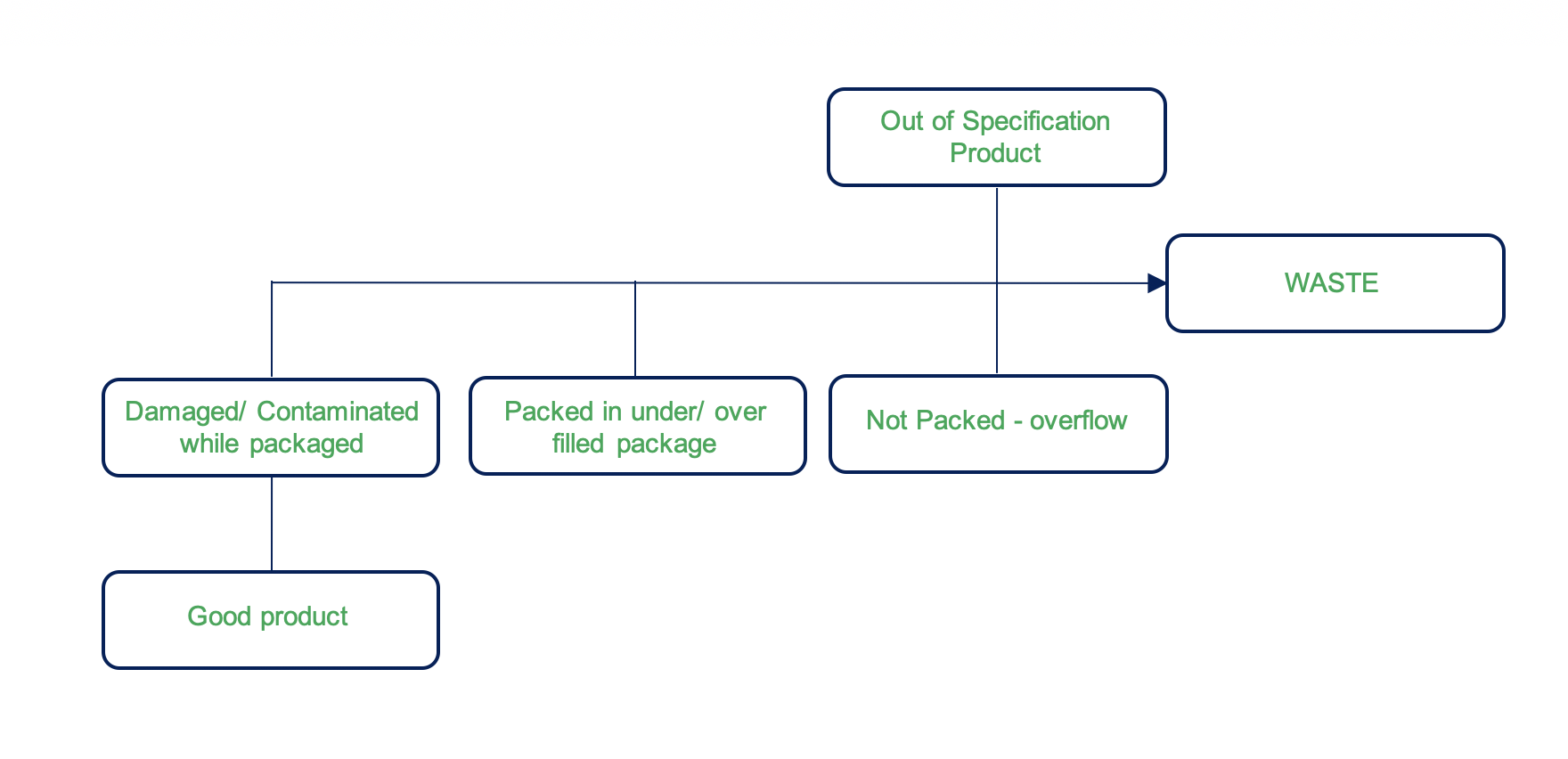How to pack 100% of sellable product

Pick Up | Short insights from our automated food packaging specialists.
Author | Andrew Lightstead, Sales Manager, UK
Key Insights:
| Automated processes can pack 100% of sellable products
| Manual processes can increase waste
| Automation will improve product quality for your customers
| Automation can give you the data to reduce waste across your operations
The truth is automation, done correctly, can reduce waste.
Waste, and the impact of automation upon it, is a topic often discussed during any decision around automating a manual operation. The major concern is that the current quality control measures undertaken by the manual operators cannot be replicated by automation.
The truth is automation, done correctly, can reduce waste and improve the product quality by utilising the data captured by the automation to improve the production processes and the product consistency delivered to the customer. This added value to a production process, beyond the primary automation task is not always captured in a return on investment calculation that focuses on the labour cost impact only.
The key to extracting this benefit is ensuring a clear, measurable definition of waste and your expectations.
The image below provides an overview of waste categories to consider?

Manual processes can increase waste
Operators by the very nature of the task they are completing have to handle the product. This can result in contamination, especially with unpackaged product, possibly not seen until product fails to reach its declared shelf life.
The task of manually packaging products is also generally seen as low skilled and as such low skilled labour is utilsied, who very often are not native language speakers. This brings challenges for communicating and achieving consistent quality control, from piece count to product specification, across the range of operators on a packaging line, each with their own interpretation of your expectations. Is cramming the correct number of products into a tray to achieve the correct piece count going to deliver the customer experience you are looking to achieve or should only product that fits the tray be packaged?
Key considerations for a no waste automated solution
Automation on the other hand is black and white. Every product is evaluated in the same way, with the same specification, resulting in uniformity and consistency.
Clear specifications | It is this Black and White interpretation of the specifications that mean it is important to define clearly, in a way that is measurable, what is a good product and what is a bad product in the early phases of a project. By collating the data on the product the system has defined as bad (Size, shape, colour, position etc) it is then possible to review the production process to make improvements and reduce the out of specification product received by the automation.
Gripper design | Placement accuracy of the robot and gripper design have an impact on damage and packaging fill. A poorly designed gripper can result in a high percentage of miss-picks which may or may not be registered by the system and this is an area to discuss in detail with your automation providers.
Overflow management | Overflow is typically avoided in a manual operation, either because the line is stopped when the packers fall behind and the Lazy Suzi is full (reducing the overall line efficiency and creating wasted time ) or the operators let the product flow into a waste bin along with the product perceived to be bad making it difficult to quantify.
Overflow in robotic automation is managed by the control software and different picking philosophies adopted by automation providers deliver different results. This is a key element to challenge your potential robotic automation providers on and ensure the control system they are offering is capable of allocating all good product to a placement position that ensures all packaging is complete.
Unfortunately there are many examples of installations in the market where poor control software has left customers with a negative impression of robotic packaging automation due to overflow waste and it is naive to assume that all robot suppliers/ integrators are able to deliver in this area.
Connect with Andrew Lightstead on LinkedIn.
Sign up to our Newsletter
Receive more insights from our automated food packaging specialists.









